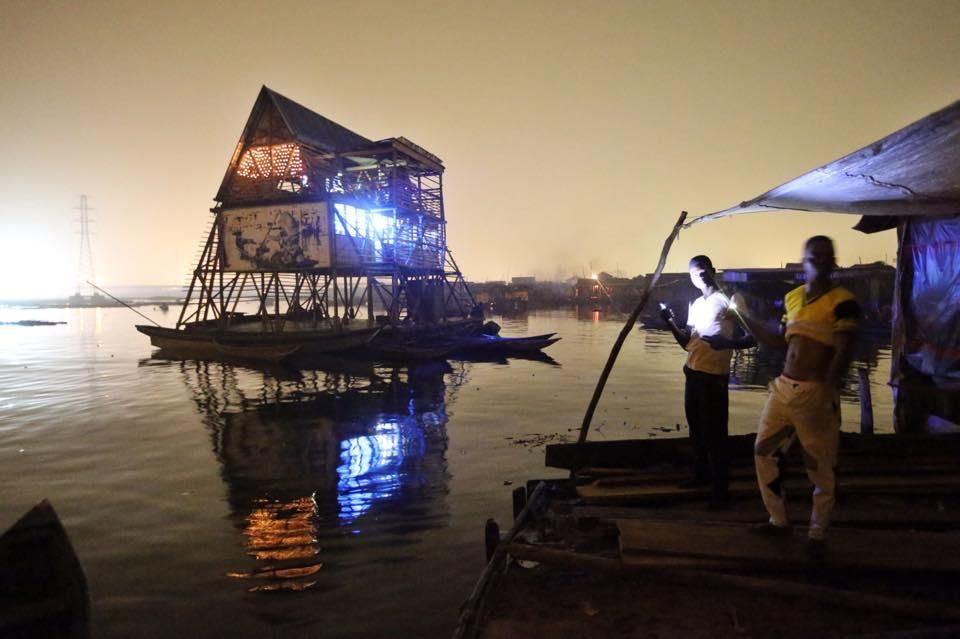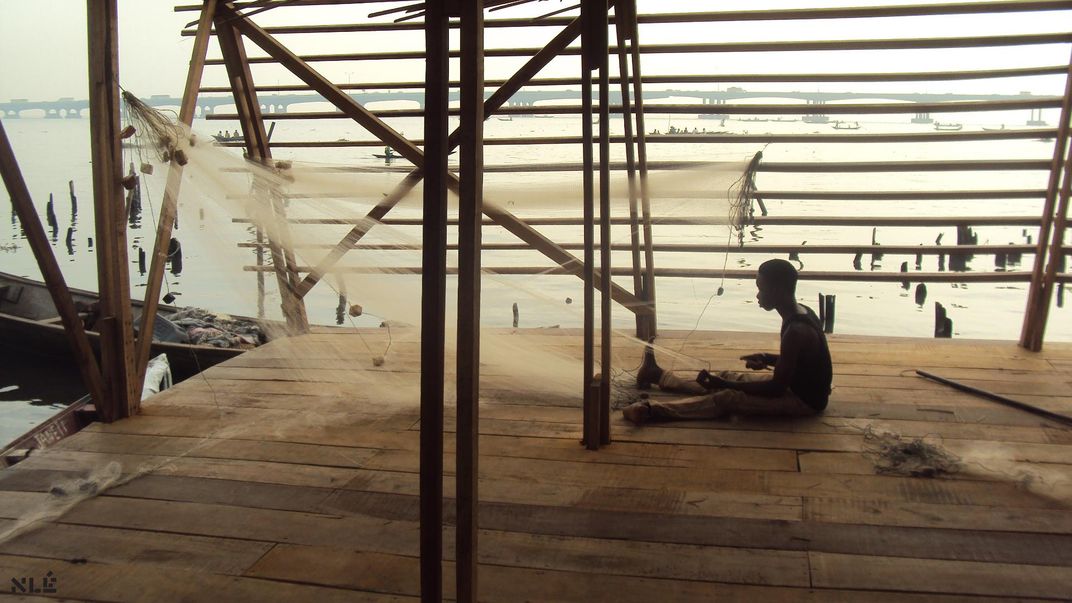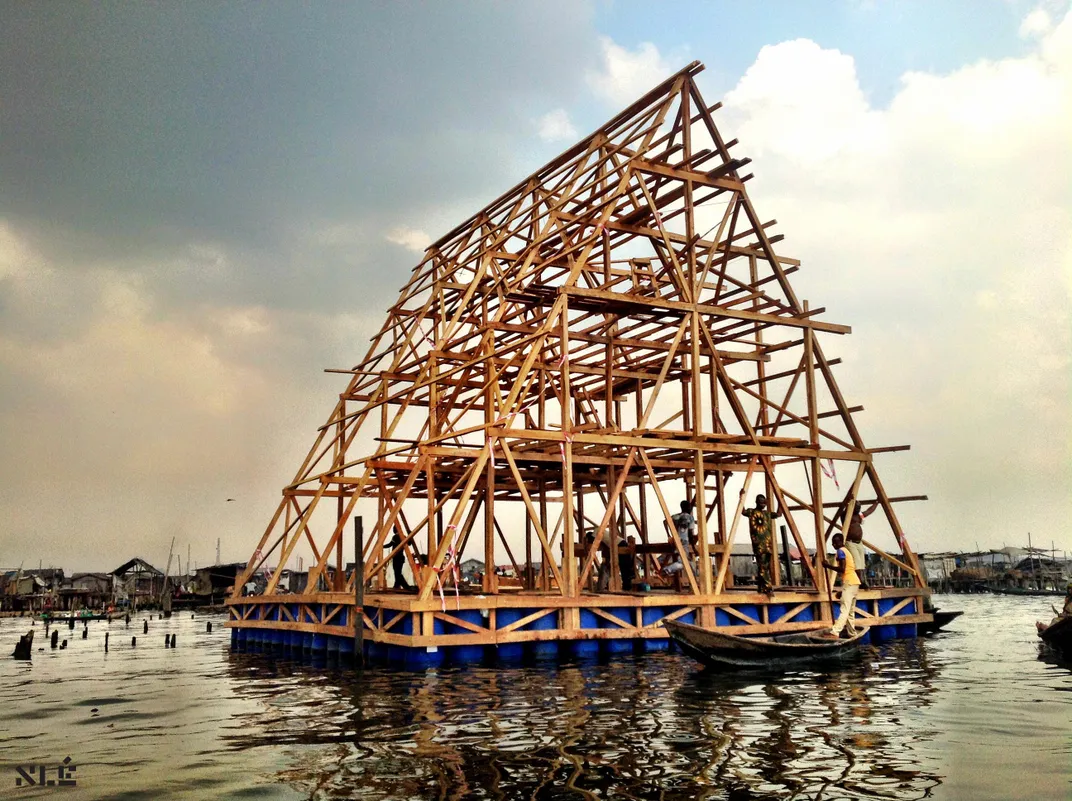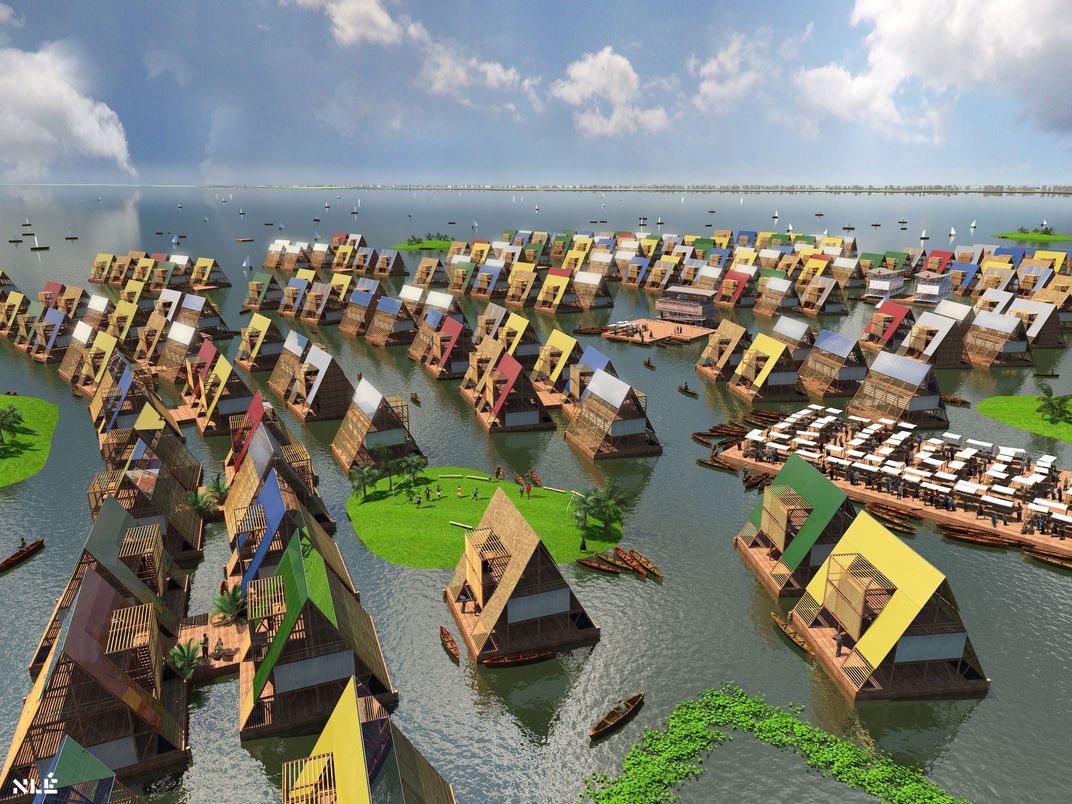This Floating School Was a Design Nerd’s Dream
…until it sank
Remember Waterworld? The 1995 flick was slated to be a summer blockbuster—but when people actually watched it, it turned into one of film history’s most fabled flops. As Cynthia Okoroafor reports for The Guardian, the same thing has played out in Nigeria on a much smaller scale with the sinking of a floating school that once was the darling of design nerds, but has since turned into a local debacle.
It all started in 2013, when architectural firm NLÈ, a design practice focused on developing cities, announced plans to build a floating school in Makoko, a neighborhood in the biggest informal settlement in Nigeria’s largest city, Lagos. Makoko, which The Guardian’s Tolu Ogunlesi has called “the world’s biggest floating slum”, is formidable both in scale (it’s home to tens of thousands—perhaps even hundreds of thousands—of residents) and ingenuity (the lagoon is home to stilted buildings and taxis made of canoes).
Makoko has also been under threat for years: In 2012, as the BBC reported, Nigerian officials declared the settlement “illegal” and began to knock down buildings. NLÈ had a grand plan for the area: generate what it called “a sustainable, ecological, alternative building system and urban water culture for the teeming population of Africa’s coastal regions” by helping Makoko residents build a floating school.
The school incorporated local know-how and found objects, like plastic barrels abandoned in the lagoon, as well as the design chops of architects who, earlier this year, won a Venice Biennale Silver Lion prize for their work on the project. As Okoroafor writes, its high profile nature pushed the government to stop its demolition plan and instead embrace revitalizing the community. The school was a design nerd’s utopian paradise—until it began sinking two weeks ago during a rainstorm.
Okoroafor reports that before it went underwater, all was not well aboard the Makoko Floating School. While the project received international attention and acclaim, local residents were apparently annoyed by its small student capacity and the long amount of time it took to turn over to the community. They were also concerned about the safety of students—though Kunlé Adeyemi, the Nigerian architect in charge of the project, claims that the boat was always meant to be a prototype.
Adeyemi tells Dezeen that the school, which had not hosted students since March due to high winds and the threat of collapse, was long planned to be just the first of several iterations. "The demolition and upgrading of the structure was in planning for a while and it had since been decommissioned," says Adeyemi. "The prototype had served its purpose in time, and we look forward to the reconstruction of the improved version amongst other great developments in the community," he continued.
Adeyemi tells Okoroafor that he wants to build a new boat that will fit 200 students…but whether it will turn out to be the design equivalent of Waterworld 2 is anyone’s guess.
(h/t artnet News)
/https://tf-cmsv2-smithsonianmag-media.s3.amazonaws.com/accounts/headshot/erin.png)






/https://tf-cmsv2-smithsonianmag-media.s3.amazonaws.com/accounts/headshot/erin.png)